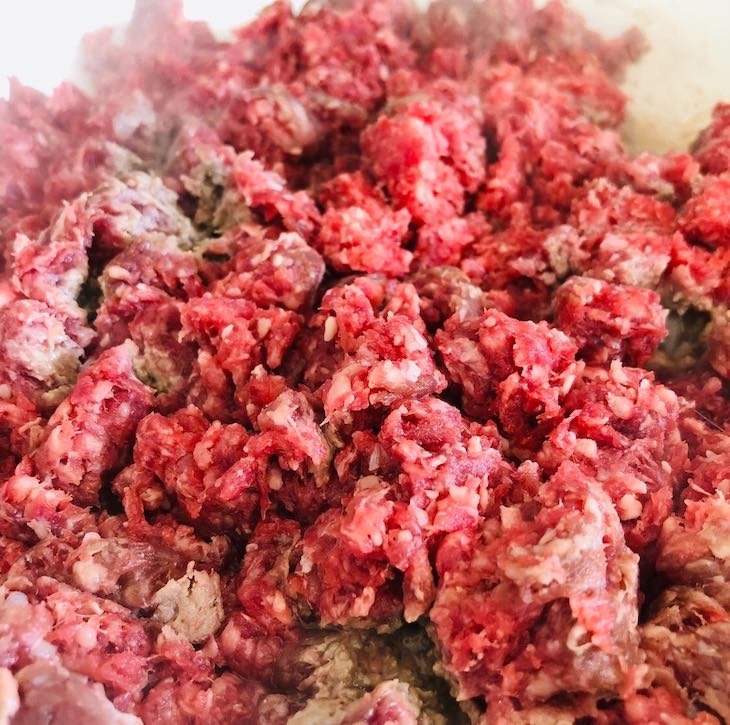One April, 2019 morning, amidst the ongoing ground beef E. coli O103 outbreak affecting much of the east-central United States, one of the attorneys on the foodborne illness team at the Pritzker Hageman law firm began her weekly meal preparation ritual. She went to her freezer and grabbed two pounds of frozen ground beef, defrosted it, and put it in a frying pan to brown. She has said her family of four goes through so much ground beef that she regularly fill my freezer with a “quarter of beef” raised by her father and processed by a local butcher shop. Her family “lives on it”.

In the U.S., a family’s subsistence on ground beef is not uncommon. For 2018, Americans were projected to eat 222.2 pounds of meat and poultry, each. According to the self-proclaimed “best information source” of the beef industry, Beef2Live.com: “Ground beef is the most widely consumed beef product among American consumers. It is estimated that 40% to 45% of beef consumed is ground beef, and when beef is prepared for meals eaten at home, ground beef is used 60% of the time.”
Why, exactly, ground beef is such a staple of the American diet is not as obvious, but is probably based on a few factors, including its relatively low cost, ease of preparation, and its use in one of the most iconic American foods—the cheeseburger.
When this attorney was in middle school, her home economics class had an entire unit devoted to simple ground beef meals. The teacher, a woman old enough to have taught the mom’s of the kids in class the same course (and who was probably the inspiration behind many mom’s frequent admonishments to their daughters to “read the label, set a better table”), was on a personal mission to teach domestic survival skills to a classroom of millennials without much hope.
After learning 8 ways to make eggs (including in the microwave), the kids were introduced to a myriad of ground beef dishes—chili, spaghetti, tacos, etc.— all starting with basic browned beef. They thawed, browned (“there should be no pink left, kids!”), and drained the beef, before completing the dish. (After they mastered browned beef, they learned how to replace missing buttons. Life skills.)
In this home economics class, there was little discussion of food safety—they certainly didn’t learn to take the temperature of our ground beef. Most kid’s experiences at home were likewise a bit light on the topic of food safety.
But you can’t see E. coli or other foodborne pathogens — bacteria is microscopic. Even after a stint in the food service industry, this lawyer didn’t learn until she began working at a law firm with a niche in food poisoning illness claims that ground beef should be cooked to 160°F. Moreover, color is not a good indicator of temperature. But, like most American consumers, as a young adult, she didn’t know that. Even if she did know it, she certainly didn’t think about it. Most cookbooks and internet recipes don’t provide safe cooking temperatures.
Because of the disconnect between typical cooking and safer food preparation and the real danger posed by E. coli infections, since the 1990s, ground beef (and other “non-intact” cuts of beef) have been subject to additional regulation. After the infamous Jack-in-the-Box outbreak, E. coli O157:H7 — the most common Shiga-toxin producing E. coli — has been considered an “adulterant” of ground beef. In 2012, the USDA’s Food Safety and Inspection Service (FSIS) added six other types of E. coli to the official list of “zero-tolerance” adulterants for ground beef—including E. coli O103. (Thanks, Obama!)
With the current ground beef E. coli outbreak, victims shouldn’t feel guilty about their cooking practices. While we should all strive to cook beef to a proper temperature, ground beef simply shouldn’t contain fecal contaminants like Shiga-toxin producing E. coli. In fact, even cooking to proper temperatures may not completely kill E. coli bacteria — meaning that the food is still a hazard to health even when the consumer does everything right.
This afternoon’s browned ground beef became taco meat and a Hamburger Helper noodle dish (don’t judge — kids love it). They think it’s safe—but since they don’t have a laboratory at their home—like all consumers, they have to rely on beef producers to do the right thing.
Attorneys at Pritzker Hageman, the underwriter of Food Poisoning Bulletin, have filed lawsuits on behalf of clients sickened with pathogens, including E. coli, Salmonella, and Listeria monocytogenes.




